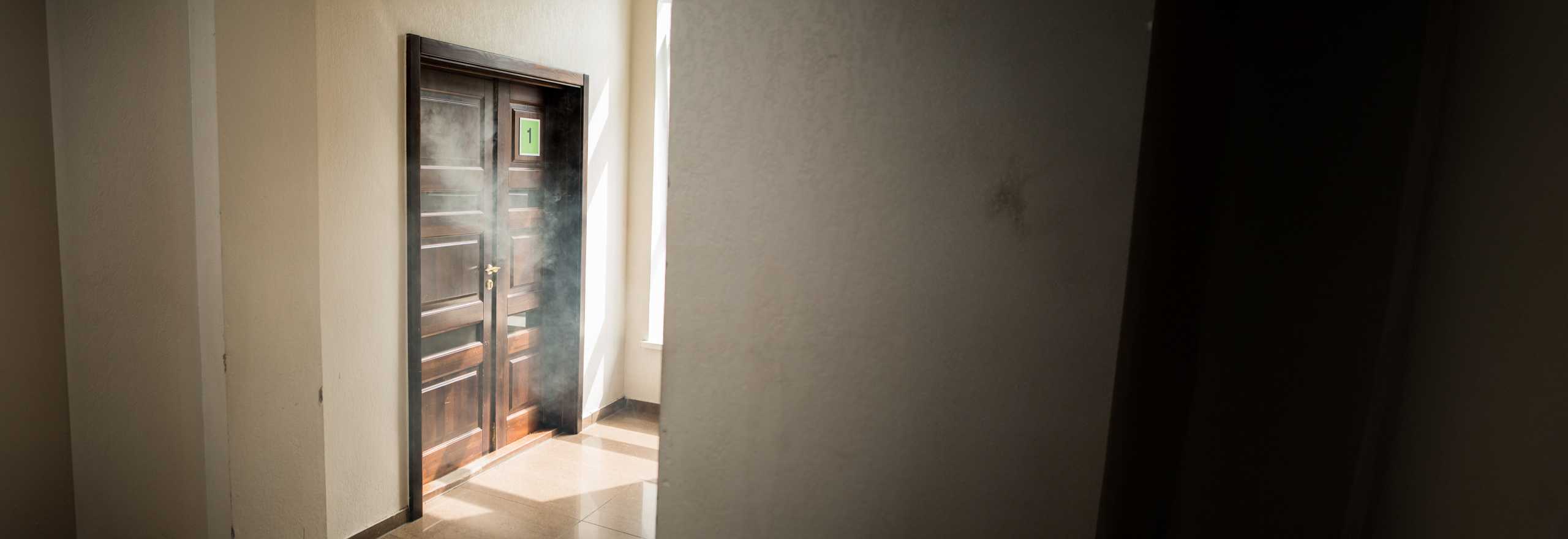
Smoke Seals
Kilargo provides smoke seal solutions that effectively restrict the spread of smoke: a dangerous and potentially fatal by-product of fire.
As well as heat, fires produce a deadly cocktail of toxic gasses and dense smoke. This is often the major cause of fatalities, as smoke is produced in large quantities and can spread long distances. Even diluted smoke can blind and disorientate people, obscure exit signage, and hinder escape. Within any residential or commercial environment, the appropriate use of a smoke seal is essential, and is an indispensable way to ensure the maximum safety for the users of these buildings.
The application of smoke seals to door assemblies is a proven method to improve safety, help save lives, and improve tenable conditions in egress routes. These seals incorporate flexible smoke-sealing fins that restrict the passage of the cool and medium temperature smoke generated in the early stages of a fire.
We also offer a range of combined fire and smoke seals that incorporate an intumescent core material that is activated by heat and expands to many times its original volume – providing a stable, resilient and insulating barrier that restricts the spread of flames and hot smoke. These seals are designed for all “phases” of smoke by providing a performance overlap, with the intumescent material being activated before the smoke-sealing fin reaches its degradation point.
Smoke Door Regulations & Standards
Building regulations
Building regulations exist to ensure the safety and comfort of building users. In Australia’s States and Territories, this is regulated through the provisions outlined in the Building Code of Australia (BCA).
The BCA provides detailed guidance on performance and construction requirements for various building types and frequently references applicable Australian Standards. These documents detail specifications and procedures designed to ensure products, services and systems are safe, reliable and consistently perform the way they were intended to.
Smoke control
Smoke door assemblies are designed to improve life safety in buildings by limiting the spread of smoke through door openings and ensuring egress paths remain unobscured and tenable. Typical applications include lift lobbies, hospital corridors, hotels and unit entry doors in multi-residential apartments.
Deemed to satisfy
BCA provides limited information in relation to smoke doors. Specification C3.4 requires that “smoke doors must be constructed so that smoke will not pass* from one side of the doorway to the other” and provides the following “deemed to satisfy” guidance.
| (a) | The leaves are side-hung to swing- (i) in the direction of egress; or (ii) in both directions. |
| (b) | (i) The leaves are capable of resisting smoke at 200°C for 30 minutes. (ii) Solid-core leaves* at least 35 mm thick satisfy (i). |
| (c) | The leaves are fitted with smoke seals. |
| (d) | (i) The leaves are normally in the closed position; or (ii) (A) The leaves are closed automatically with the automatic closing operation initiated by smoke detectors, installed in accordance with the relevant provisions of AS 1670.1, located on each side of the doorway not more than 1.5 m horizontal distance from the doorway; and (B) in the event of power failure to the door, the leaves fail-safe in the closed position. |
| (e) | The leaves return to the fully closed position after each manual opening. |
| (f) | Any glazing incorporated in the door complies with AS 1288. |
| (g) | (i) If a glazed panel is capable of being mistaken for an unobstructed exit, the presence of the glass must be identified by opaque construction. (ii) An opaque mid-height band, mid-rail or crash bar satisfies (i). |
*The specification creates some confusion, particularly with regard to the perceived zero smoke leakage requirement and that “solid core” door construction remains undefined.
Performance-based solutions
BCA allows provision for the use of “ Performance Based Alternative Solutions” and the introduction of two important Australian Standards – AS6905:2007 & AS1530.7:2007 – have allowed fire engineers and building practitioners to specify smoke doors with quantifiable levels of performance with the knowledge that installed assemblies will meet their building design requirements.
AS1530.7: 2007 - Methods for fire tests on building materials, components and structures. Part 7- Smoke control assemblies - Ambient and medium temperature leakage test procedure
This Standard sets out a method to measure the leakage of ambient and medium temperature smoke from one side of a door assembly to the other under specified test conditions. The test methodology involves fitting a full-size door assembly, including all essential hardware, to an approved test chamber in which temperature and pressure conditions are controlled. Ordinary air is used in the chamber, simulating the carrier gases of real smoke. Pressures are applied and resulting “leakages” through the test assembly are measured to determine its effectiveness as a barrier to smoke. Measurements are taken at pre-determined periods that provide data to align with the BCA deemed to satisfy regime of 30minutes exposure at 200°C.
AS6905: 2007 - Smoke Doors
This Standard sets out the specification, construction, installation and identification of smoke doors. The standard requires that assemblies are tested in accordance with the test methods detailed in AS1530.7. Most importantly, it defines the maximum allowable smoke leakage rates for single and double door assemblies at prescribed temperature and pressure differentials.
